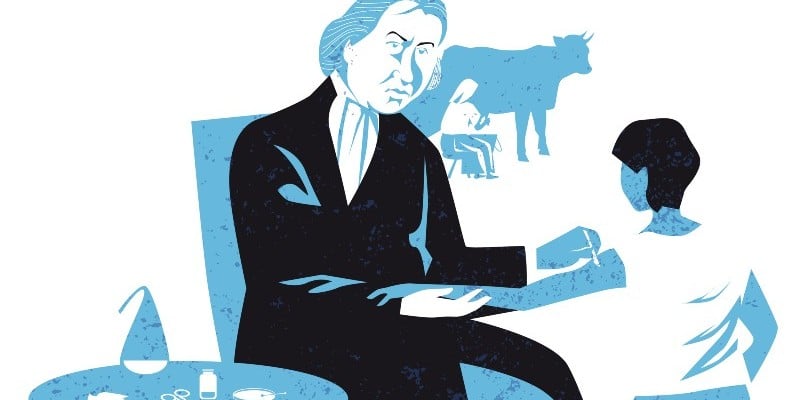When you think about smartphones, do you think of Simon?
When I say fork, how many of you fearfully associate the utensil with the devil’s pitchfork?
Better yet, when you think about vaccines do you assume you’re receiving that vaccine directly from someone else’s body?
My guess is that most of you answered “No” for the above three questions, but when looking at the history of these three innovations –the smartphone, the fork, and the vaccine – all of these facts are very relevant to their diffusion.
The Smartphone
In 1992 IBM announced the Simon Personal Communicator, the first smartphone, although it wouldn’t be called “smart” for another ten years. Simon included a touchscreen, email capability, and built-in applications. Despite these features Simon was a flop and only stayed on the market for six months. To be fair, Simon did have multiple issues – it was heavy and bulky, the battery only lasted an hour, and it only had a 15 state service area. However, these issues weren’t solely to blame for the phone’s demise. In fact, Simon taught us a very valuable lesson: that the success of ground breaking products heavily relies on its ecosystem.
The modern day smartphone market truly took off in the 2000s, with the introduction of the iPhone. The success of the iPhone was in great part due to its capability to access the Internet and the ability to download third party applications. Web browsers simply weren’t available when Simon was conceived in the 90s, but when the iPhone came along in 2007 it had full access to the internet, and the ability to download many additional applications. What helped the iPhone succeed was the rich environment of fast networks, Web browsers, and Internet possibilities that weren’t yet available to the often forgotten, Simon.
The Fork
The fork can be traced back to ancient civilizations, but it wasn’t widely adopted until centuries later. The fork was the most controversial of all the utensils. At first its design was seen as anti-Christian and villainous, and later it was seen as too feminine. Society’s perception of the fork played a significant role in its adoption.
The fork became more popular in the 16th century after a trendsetter of the time, Catherine De Medici, introduced and destigmatized the utensil in France. It went from being associated with the devil and unnecessary lavishness to being associated with wealth and refinement. Even then many men refused to use the fork because it was too feminine. It took a design change, adding ruffled cuffs to the fork, to encourage adoption.
What we learned from the fork is that the social aspect of an innovation, as well as the credibility that outside actors can lend to it can ultimately spur its widespread adoption and diffusion.
The Vaccine
In 1796 Edward Jenner successfully discovered the smallpox vaccine. Even though there was great need for this innovation–the world was experiencing a smallpox epidemic at the time– the Royal Society of London refused to publish Jenner’s discovery. It wasn’t until members of the medical field ran successful experiments using Jenner’s vaccine samples that the idea of vaccination began to spread. Even after these trials proved safe and reliable, it still took prominent members of society, including aristocrats, members of the royal court, and the Pope lending their support for this new discovery for the public to accept it. Then came the next hurdle: transportation.
The vaccine was first distributed through body to body transmission. Young men would bring the vaccine to America in their bodies and when pustules appeared on their arms doctors would scrape the area to infect other people. From arm to arm the vaccine spread to America, Mexico, Macau, and Manila. In ten years it went global.
Similar to the smartphone and the fork, what the vaccine needed to succeed was social credibility and a rich ecosystem to support it. Members of the medical field, noblewomen, royals, and the Pope lent the necessary credibility. And although the rich supportive ecosystem of transportation didn’t exist yet, public health officials at the time found an ingenious workaround through body to body distribution. Eventually, a supportive ecosystem did emerge to diffuse smallpox and many other vaccines.
What the stories behind these innovation evolutions teach us is that it takes a lot more than just an invention to create a market. Market creation starts out with an invention but over time, it requires other activities and actors to play key roles in its development. As is clear today, once the market is created the impact is immense. You may not all think of Simon, or pitchforks, or arm pustules but many (if not all) of you have a smartphone, use a fork, and have been vaccinated.



